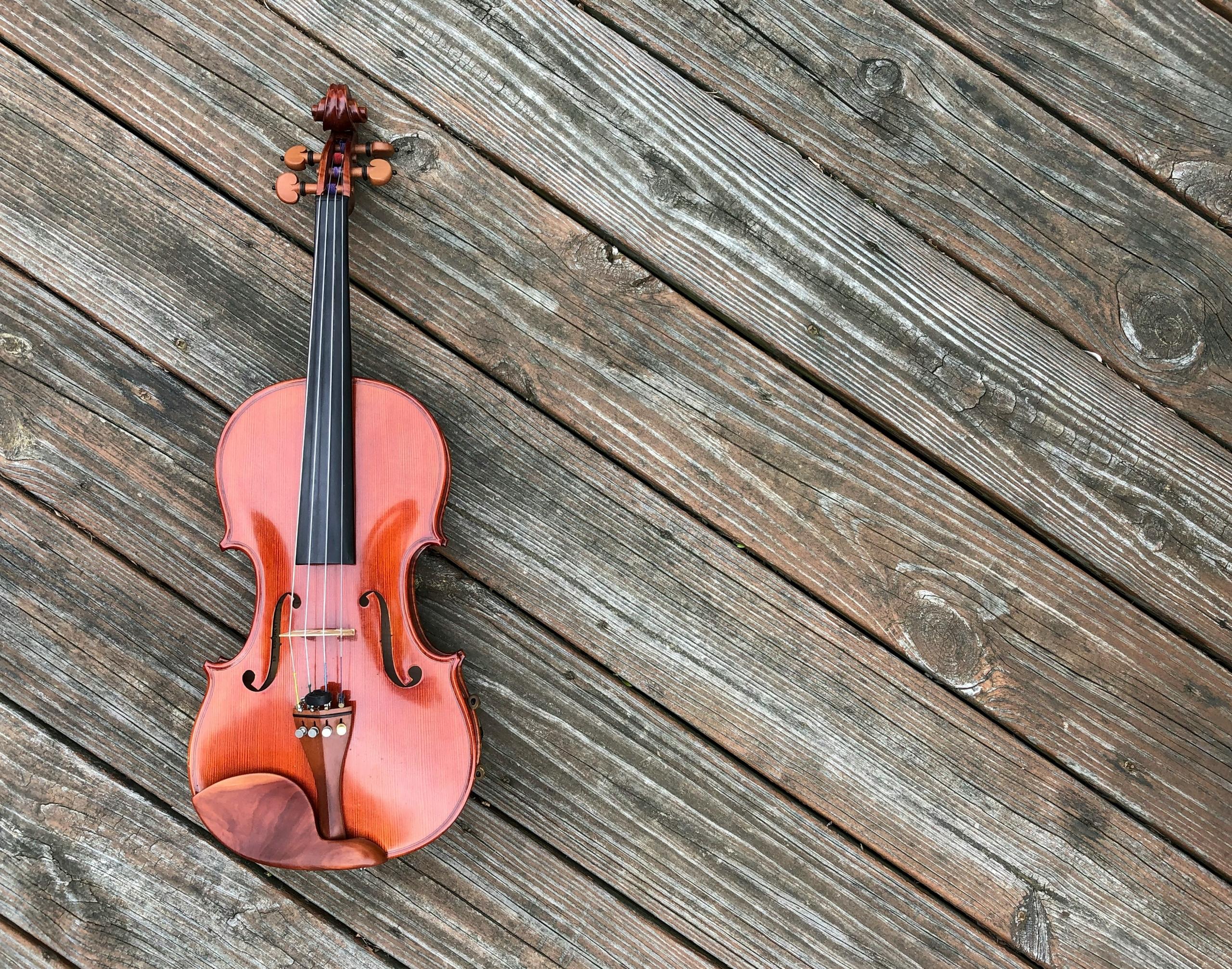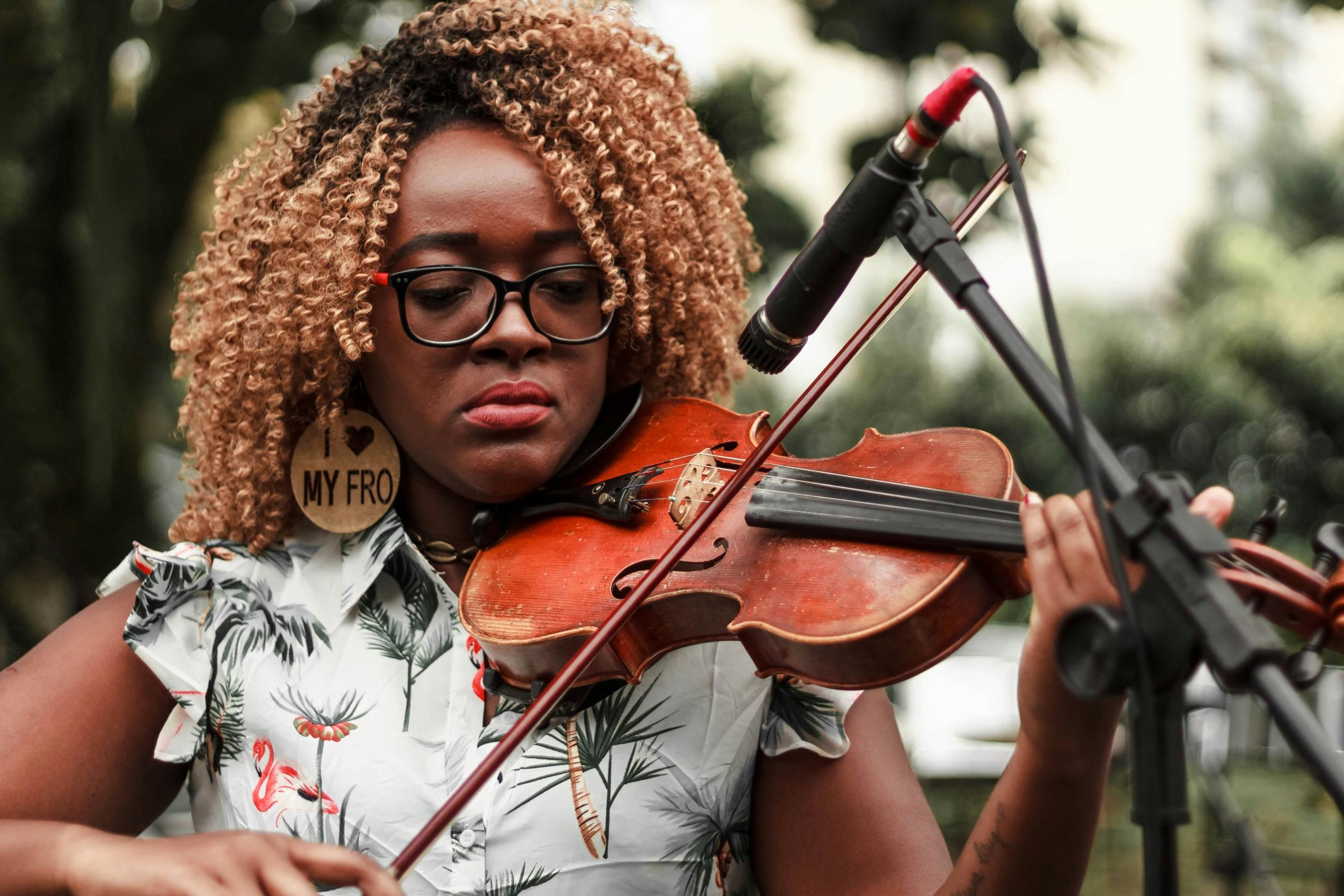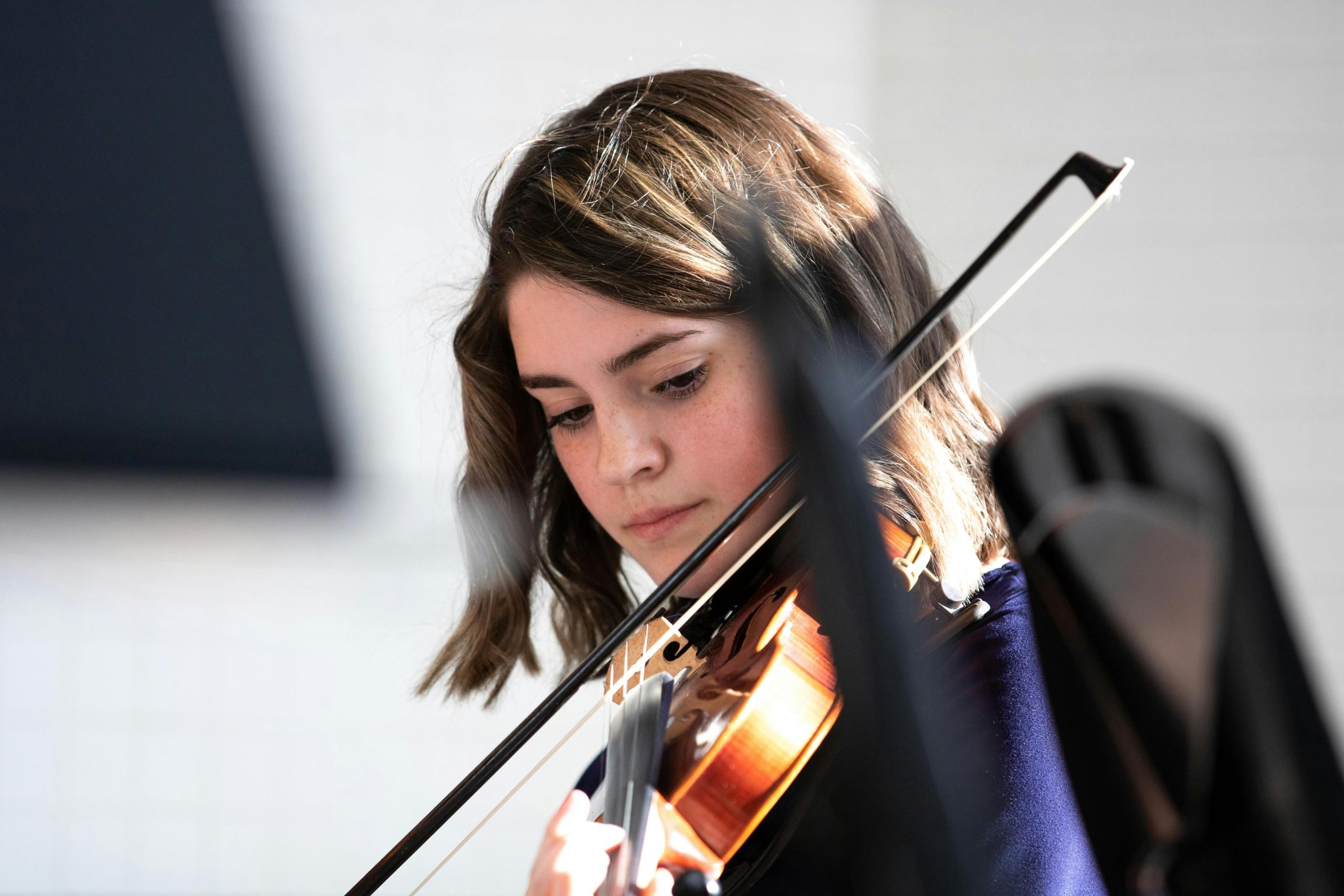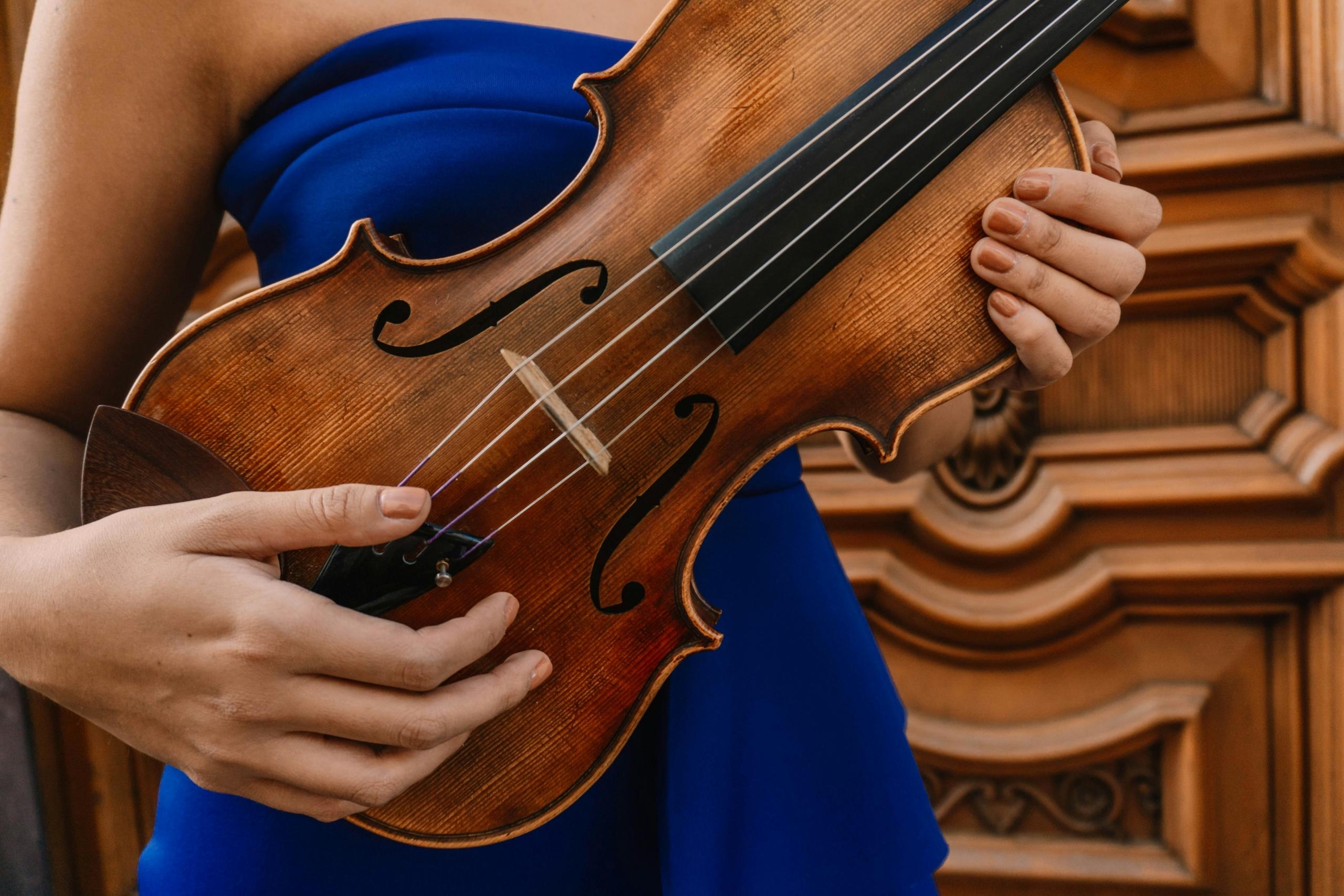When you play a violin piece, you are a storyteller, and you're telling a story. Joshua Bell
Violins are one of the most popular musical instruments in the world. The eloquent tones complements a variety of musical styles, from allegro to slow and soothing.
Did you know that the violin is the smallest member of the family of stringed instruments?
Good things come in small packages and this stringed instrument is no less than an exquisite form of musical brilliance.
This charming little instrument comes in various sizes and there are quite a few different violin types in the violin family.
We will be exploring a brief history of violins, the different types of violins names, how many different kinds of violins there are and which level goes with which type of violin.
So, if you are a beginner looking to buy your first violin or an advanced violinist wanting to learn more about the electric violin - this article is here to help you!

A Brief History of Violins
The violin started to gain popularity as early as the 16th century. But let’s travel a bit further back in time.
The violin we know today was developed from a variety of other stringed instruments.
The pear-shaped lyra from the 9th century, the two-stringed Arabic rebab and the three-stringed rebec from the 11th to 13th century are all ancestors of the European bowed instruments.
A popular nickname for the violin is the fiddle. This name is mostly used in a folk music context and sometimes in classical music scenes. Stringed instruments have a long history in traditional music, but after appearing in royal courts the violin became more standardised.
The violin as we know it today emerged in early 16th-century in northern Italy. There are many famous violin makers, also called luthiers, but Andrea Amati was one of the first to construct 24 pieces for the French King Charles IX.
The modification of the violin didn’t end in the 16th century, further changes occurred in the 18th century. These construction changes ensured perfection in craftsmanship and sound ensuring that it remained one of the world’s most renowned stringed instruments.

How Many Types of Violin Are There?
Now that you know a bit of violin history lets dive into the different types of violins. The violin, viola, cello, and double bass make up the traditional modern violin family.
All of the instruments in the violin family have names derived from the Latin word vitula, which is a derivative of the root viola (meaning "stringed instrument"). So, the violin is a “little viola”.
There are as many as 6 types of violin instrument. They are:
- Classical Violin
- Baroque Violin
- Fiddler
- Five String Violin
- Electric Violin
- Stroh Violin
This petite instrument is popular among various music genres including classical, folk, pop and jazz. No wonder there are so many different kinds of violins.
Let’s look at each of them a bit more closely.
The Baroque Violin
During the Baroque Period of music that started around 1600, originated the Baroque violin.
It may seem that these acoustic violins look the same, but they are quite different. The neck of the Baroque violin is straighter and there are a few other physical differences between the two violins.
One in particular to mention are the strings.
The strings used on a Baroque violin are fitted with gut strings, whereas other violins have synthetic strings.
The sounds of this instrument are much softer and more resonant than the modern ones.
Classical Violin
The classical violin is also known as the modern violin.
This particular type was developed in the Classical era roughly between 1750 and 1820. Because of its expressive nature it plays a very important role in classical music.
The adjustments from the Baroque to modern violin gave it a much better range and a lot more projection. This period is also where the chin rest was added.

The Fiddle
The main difference between a fiddle and a violin is the violinist.
The physical features of the violin and the fiddle are exactly the same. The difference is the type of music the musician plays. A fiddler is known to play folk or country music rather than classical music.
You may ask, how did this tradition get started? I'll tell you. I don't know. Tevye (from the movie Fiddler on the Roof)
Fiddle players have a more informal and spontaneous form of playing than classical violinists. Fiddle players often use unconventional techniques like bending their bows, and may hold the instrument in non-traditional positions.
Those playing the fiddle like to play on two strings whereas classical violinists stick to one string. Because they play with two strings they like violins with flatter bridges, which make it easier to play with two strings at once.
To be a violinist or a fiddler all comes down to personal preference.
Stroh Violin
The Stroh violin was created by John Stroh in London, England in 1899, to be used for recording violin music.
The Stroh violin looks completely different to the classical violin and is much louder than the standard violin.
However, sound is the one element of the Stroh violin that reminds you it is, in fact, a violin!
The Stroh violin looks nothing like a classical violin; its body is essentially the fingerboard and there are two horns attached to the body.
The violin's bridge connects to a diaphragm which converts the vibrations produced with the strings into sound that emanates from the amplifying horn. The smaller horn is positioned near the violinists ear and serves as a monitor.
This interesting instrument is also called the Stroviol.
Stroh violins were regularly used in recording studios, but as recording technology improved, they were later replaced by traditional violins.
If you would like to diversify your current music selection then the Stroh violin could be a good option to try. Also consider reading this guide to help you tune your violin.
Five String Violin
Yes, this violin has a 5th string and is quite rare. The extra string is lower than the violin’s normal range, it is low C so it combines the ranges of the viola and the violin. This type is often used for improvisation in country, jazz and swing. Many tend to think that the extra string is the only difference between this violin and the classical one, but you’ll be fascinated to know it’s not. It is made wider and deeper to make sure the C string can be played.
This violin has become a favourite amongst those who are looking for a broader range of pitch creating a wider variety of pieces.
Electric Violin
Recently evolved, the electric violin comes with more volume and is available in many different shapes and sizes. All the sound is amplified electronically. There are some that look just like the acoustic ones and others that have more a futuristic type of look. The pro of this type of violin is that it fits into almost any musical genre because you can adjust the tone of your playing.
Did you know that some of the electric violins have more than five strings?
Electric violins work with pickups. Pickups transfer internal vibrations into sound, which is subsequently delivered through an amplifier. They serve as sensors for internal vibrations in the instrument.

An electric violin is an excellent choice if you would like to experiment or add an edge to your music, which is why they are a popular choice among advanced violinists.
Electro-Acoustic Violins
With an electro-acoustic violin you can find the happy medium between electric and acoustic violins. They function like the conventional acoustic violin when unplugged, yet they can still be amplified through a speaker just like an electric violin.
This type of violin is also known as semi-acoustic or acoustic-electric violin.
The electro-acoustic violin can be ideal for you if you're a performer who values flexibility in your instrument.
It doesn't matter which violin type you choose in the end, but you must always remember to take good care of this delicate instrument.
A Violin Collection For Each Level
Now that we’ve covered the different kinds of violins, we are ready to look at the violins suited to the violinist's level.
Learning to play the violin takes a lot of dedication and skill. As your skillset grows so will your needs and goals. That means every level may demand a different violin to help you develop your skills even more.
Therefore, violin crafters manufactures many different shapes and sizes with all sorts of players in mind.
Violins for Beginners
Beginner violins, also called student violins, are fairly easy to come by. Because there are so many options to choose from when for your first violin, the one you will choose will depend on your goal and budget.
According to various sources, the best beginner violin is a Stentor violin. The Stentor student violin is not only reliable, but also well-built. It is affordable and ranges between R2500 - R3800.
If you're ready to buy your first violin, learn what to expect in our article about violin prices.
Violins for Intermediate Players
Intermediate violinists are known to reach level grade 4 to grade 6 standard. Finding a violin for the advanced level can be complex. Advanced students need the ease of use and versatility of a beginner violin with the artistry of an advanced violin. The intermediate stage of violin training doesn’t last very long so these students stick to their beginner violin until they reach an advanced level or they go straight for violins suited for advanced players.
Violins for Advanced Violinists
When it comes to playing violin at an advanced level your violin becomes an important investment. Most accomplished violinists like to play with antique violins. High value violins like antique violins are also very expensive and is often seen as an investment amongst accomplished violinists.
An example of a world renowned and popular violin for professionals are called Stradivarius violins.
Do you have a better idea of which violin will be best suited for your musical journey?
If it is true that the violin is the most perfect of musical instruments, then Greek is the violin of human thought. Hellen Keller















